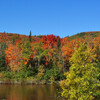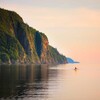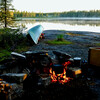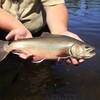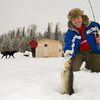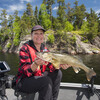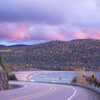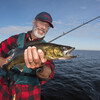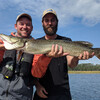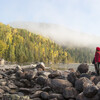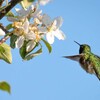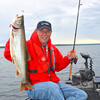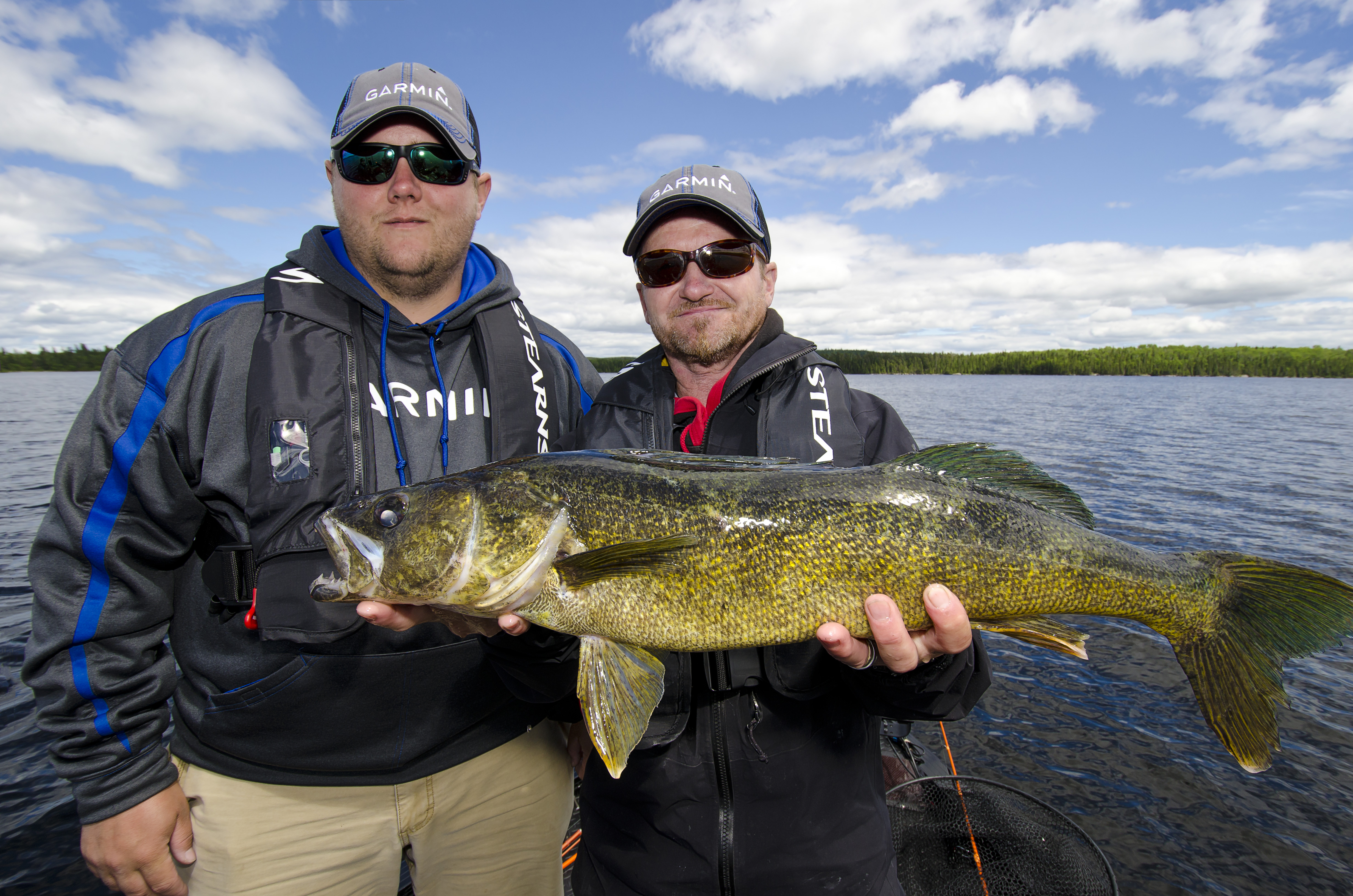
A Passion for Pike
My first trip to Algoma Country would have been around 1978. A lot of the details regarding that trip escape me, but one thing that is as vivid today as it was back in '78 focuses on the realization that no place has better pike fishing than Ontario's Algoma Country.
Even with the limited gear and fishing skills, I possessed at that tender age, I came home hooked on the rush only pike fishing can deliver. Not only do pike have the habit of following a lure and striking right at the boat side, but these fish also grow large enough to make any angler weak in the knees.
Over the years I've returned to Algoma Country dozens of times for the single purpose of scratching my pike fishing itch. Early on in this journey, I was motivated by numbers. Catching lots of fish on any given day was what got me excited. These days, numbers are interesting but I would much rather catch big mature pike.
Patience is a virtue, and in the realm of pike fishing, patience could be described as essential. Very few lakes are overrun with trophy-sized pike. Catching pike that stretches the tape measure 40 inches or more requires a considerable investment in time and also pike fishing knowledge.
The Big Picture
I describe pike fishing as a giant jigsaw puzzle with various pieces representing key bits of information. This puzzle starts by identifying lakes that routinely produce trophy-size fish. Not all lakes have the forage base and habitat to produce significant numbers of big pike. My favourite lakes are ones that also have lake trout because lakes with lake trout tend to have pelagic forage species like ciscoes. Ciscoes are protein-rich forage that pike love and grow fat eating.
The next piece of the puzzle is the spawning habitat. The best pike lakes tend to have rather large rivers or streams feeding the lake. Pike run up these rivers and spawn in the adjacent marshes and flooded brush.
The third piece of the puzzle is limited fishing pressure. Pike are aggressive feeders and when a lake has heavy fishing pressure, the number of giant fish quickly diminishes.
If a lake has these important puzzle pieces, there is a pretty good chance it will produce good numbers of quality pike. If any of these puzzle pieces are absent, the lake is more likely to produce large numbers of small fish.
The fourth and perhaps most important piece of the puzzle is knowing when to fish. More than 80% of the pike I've caught over 40 inches have been taken in the spring of the year immediately following the spawn. Late May and early to mid-June are the absolute best times to plan a pike fishing trip to Ontario's Algoma Country.
Go-To Presentations
It's hard to suggest just one or two pike fishing presentations because different lures produce better in different situations. In the spring, after pike have spawned the adult fish will linger in shallow water flats containing emerging weed cover for three to five weeks depending on water temperature. About the time the surface water hits 60°, most of the adult pike will have abandoned the shallows in favour of deeper water for their summer home.
Big and I mean big jerkbaits are probably my favourite way to catch big pike because these lures are worked close to the surface. When a big pike slams a jerkbait the boil on the surface is a major rush.
Working a jerkbait is the magic and honestly, it took me a lot of years to understand that the more erratic the action of the bait, the more pike like them. This darting, twisting and turning action is created by snapping the rod tip on the slack line so that each time the line pulls tight the bait darts off in a different direction.
A few hours of casting and jerking the big stickbaits suited to pike fishing will separate the men from the boys. It's not easy to work a big jerkbait because the resistance of snapping these lures through the water quickly makes your wrist feel like a truck ran over it! The biggest mistake I see among pike fishermen trying to master the jerkbait bite is they get tired and pull the lure instead of snapping it aggressively.
My favourite pike fishing jerkbaits include the Salmo Warrior Crank, Yo-Zuri Magnum Crystal Minnow, Rapala 18 Minnow and Bomber Magnum Long A. All of these lures are big enough to attract the attention of big pike.
The second lure I never leave home without is musky-sized bucktail spinners. Big bucktails have big blades that displace a lot of water and create a huge amount of commotion. About the smallest bucktail blade I routinely throw are No. 7s and blades up to 10 are good at times.
Bucktails work best when cast long distances and burned just under the surface. These are reaction baits so speed helps trigger strikes from pike that would simply follow them if they were fished at slower speeds.
Rods, Reels, Line
Because pike grows large it makes no sense to show up with rods and reels not suited to the purpose. I use bass-style flippin' sticks with a round-style baitcasting reel and 50- to 65-pound test super braid line. I then tie in an 80-pound test fluorocarbon leader about 24 inches long and terminate with a heavy snap for jerk baits or snap swivel for fishing bucktails.
Anglers who are uncomfortable with baitcasting gear can use heavy-action spinning rods designed for saltwater fishing. A 7-foot heavy action spinning rod will do nicely for targeting big pike when matched up with a 40 series spinning reel and 50-pound test super braid line.
Summing It Up
Pike are unique in that they are widely distributed across Ontario's Algoma Country and there are literally hundreds of fisheries that produce bragging-sized fish. Timing your trip in the early spring and working the shallow back bays and river inlets almost guarantee you're encountering pike action.
If you come equipped with the right rods, reels, lines and lures, there is literally no reason why any determined fishermen can't find and catch trophy-size pike. Remember that big pike are a unique resource that should be quickly released so future visitors to Algoma Country can experience the same rush of catching one.
Recommended Articles
Fresh Fish Fries

Peace Restaurant
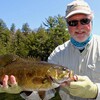
Pro Fly Fishing Tips
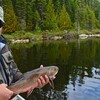
Mar Mac Lodge
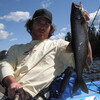
A Fishing Paradise
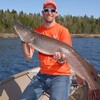
Taking Fish Photos
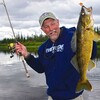
Picking a Fishing camp

A Weekend Tour of Wilderness and Great Eats
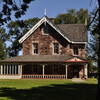
Parks Canada Sites
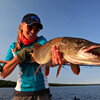
Brennan Harbour Resort

Superior: Into the Landscape

Why Algoma?

The Dog Blog
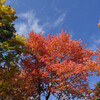
Algoma's Favourite Fall Colour Photos
Highway 638
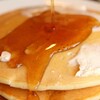
Celebrate Spring
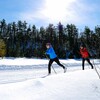
Winter Getaways

Agawa Fish and Chips Stand
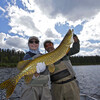
Pine Portage Lodge
